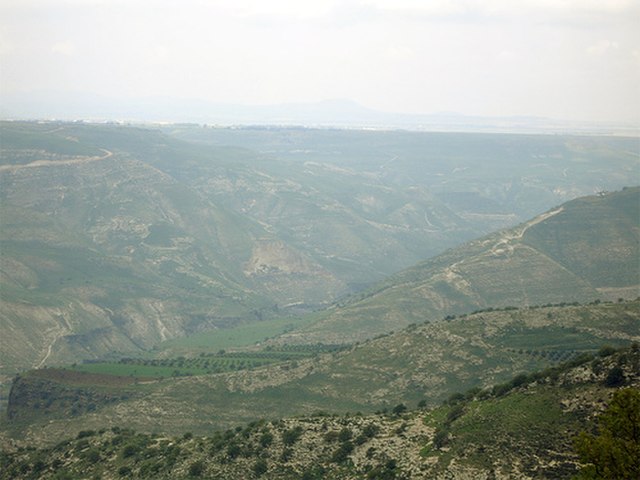The Battle of the Yarmuk was a major battle between the army of the Byzantine Empire and the Arab Muslim forces of the Rashidun Caliphate. The battle consisted of a series of engagements that lasted for six days in August 636, near the Yarmouk River, along what are now the borders of Syria–Jordan and Syria-Israel, southeast of the Sea of Galilee. The result of the battle was a crushing Muslim victory that ended Roman rule in Syria after about seven centuries. The Battle of the Yarmuk is regarded as one of the most decisive battles in military history, and it marked the first great wave of early Muslim conquests after the death of the Islamic prophet Muhammad, heralding the rapid advance of Islam into the then-Christian/Roman Levant.
Illustration of the Battle of Yarmuk by an anonymous Catalan illustrator (c. 1310–1325)
Across the ravines lies the battlefield of Yarmuk, about 8 miles away from here, in Jordan
The Rashidun Caliphate was the first caliphate to succeed the Islamic prophet Muhammad. It was ruled by the first four successive caliphs of Muhammad after his death in 632 CE. During its existence, the empire was the most powerful economic, cultural, and military force in West Asia and Northeast Africa.
Coin of the Rashidun Caliphate, circa 647–670, imitating Byzantine coins, featuring a Byzantine figure (Constans II) holding a scepter and globus cruciger
Tombs of caliphs: Abu Bakr and Umar (right), Medina, present-day Kingdom of Saudi Arabia
Muhammad's widow, Aisha, battling the fourth caliph Ali in the Battle of the Camel (16th-century miniature from a copy of the Siyer-i Nebi)
Illustration of the Battle of Siffin, from a 14th-century manuscript of the Tarikh-i Bal'ami






